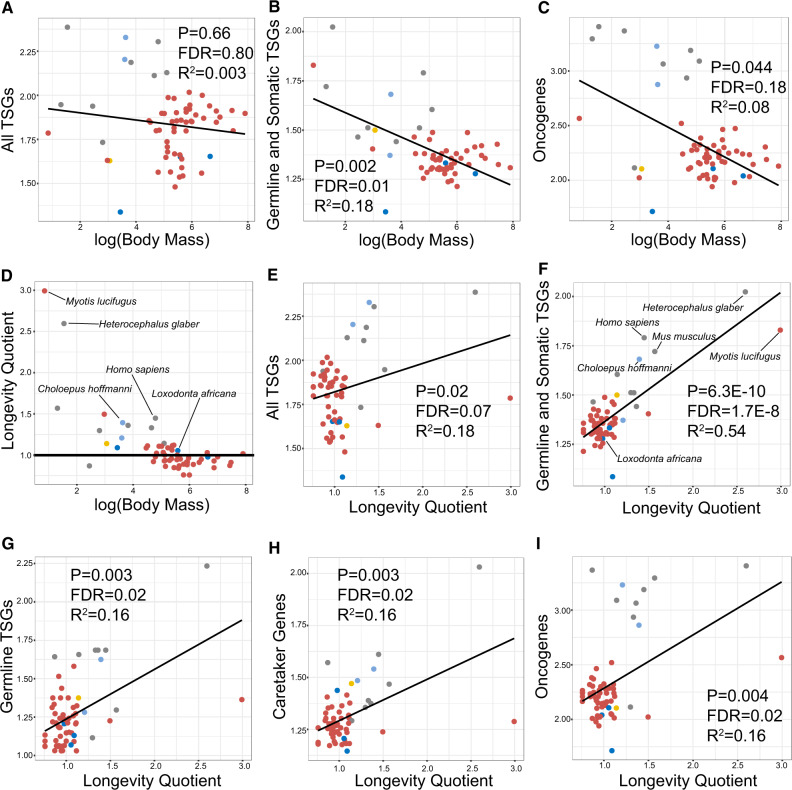Fig. 4.
Cancer gene duplications are positively associated with longevity, and not body mass, in mammalian genomes. (A) There is no association between tumor suppressor gene (TSG) duplications and body mass (given in log10) when we grouped all TSG types together. (B) The only subset of TSGs whose copy numbers in mammalian genomes are significantly associated with body mass are those which are mutated in both human germline and soma. This relationship is slightly negative and is of moderate significance (FDR = 0.01). (C) Larger mammals have fewer oncogene duplications; however, this relationship in nonsignificant when taking into account both phylogeny and multiple testing. (D) LQs versus body mass for 62 mammals included in this study. Key species relevant to this study are labeled. Black line indicates LQ = 1.0, where the observed longevity is equal to the expected longevity. (E) There is a positive correlation between TSG duplications and LQ when we grouped all TSG types together; however, this relationship is nonsignificant when taking into account multiple testing (FDR = 0.07). (F) The strongest correlation (R2 = 0.54) was found between duplications in TSGs mutated in both human germline and soma and longevity. LQ is also correlated with duplications in TSGs with only germline mutations (G), caretaker genes (H), and oncogenes (I). Colors represent mammalian clades following figure 1A. All y axes are given in terms of normalized cancer gene copy number (the total number of cancer gene homologs divided by the number of found cancer gene orthologs).

